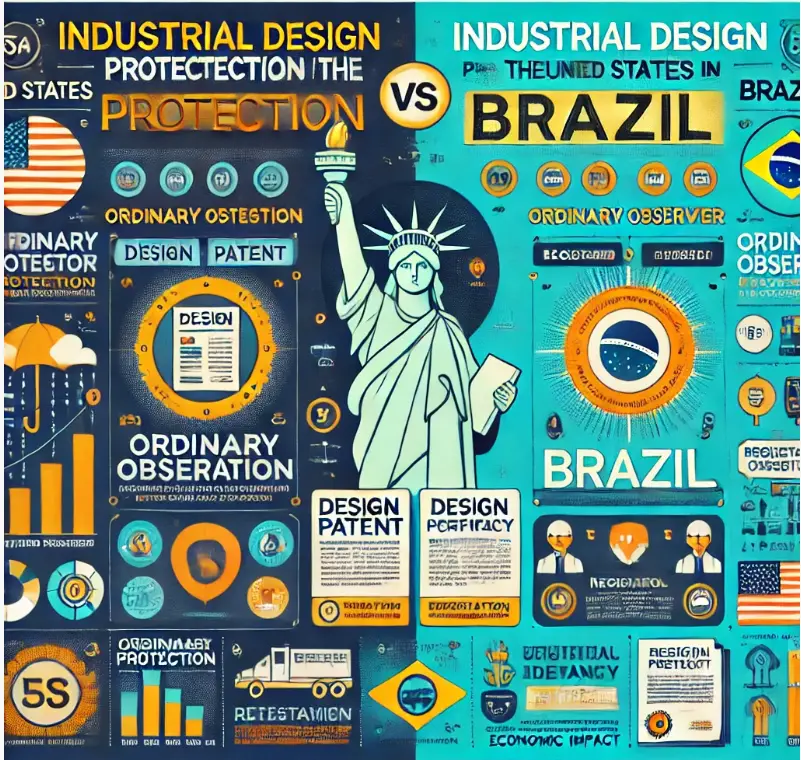
By: Marcus J Zanon, 10/07/2024.
Introduction
Industrial design is crucial in distinguishing products in the market through their aesthetic and functional qualities. For designers and manufacturers, understanding the protection mechanisms available in various countries is essential. This overview compares the industrial design protection frameworks in the United States and Brazil, providing a clear guide for navigating these legal landscapes.
United States: Design Patents
In the United States, industrial designs are protected under the design patent system, overseen by the United States Patent and Trademark Office (USPTO). Key features include:
Brazil: Industrial Design Registration
Brazil approaches industrial design protection through a registration system managed by the Brazilian Institute of Industrial Property (INPI), focusing on efficiency and accessibility:
Comparative Insights
Operational Challenges
Conclusion
Understanding the nuances of industrial design protection in the U.S. and Brazil is vital for businesses and creative professionals operating internationally. Recognizing these differences helps in developing informed protection strategies and fostering innovation. As the global landscape of trade and design legislation continues to evolve, staying informed about these legal frameworks is crucial for navigating future challenges and opportunities.